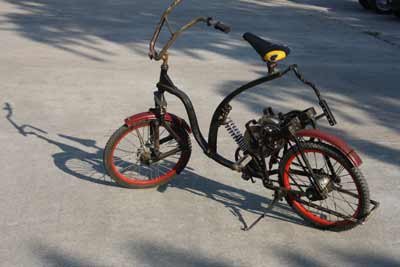The Design Thinking Way of Business
The Design Thinking Way of Business
Swapan Jyoti Sarma
The BBC News documentary ‘Jugaad Man- The Non-stop Inventor’ is a recognition of Assam’s pride, Innovator and Inventor, Padma Shri awardee Dr Uddhab Kumar Bharali. The word ‘Jugaad’ is uniquely Indian. Oxford English dictionary has officially accepted ‘Jugaad’ as a noun which means a flexible approach to solve a problem, that uses limited resources in an innovative way. Dr Bharali, an engineering college dropout, has created around 120 innovations, winning awards and recognition from NASA, National Innovation Foundation, Central and State governments, universities, institutes and organisations. His innovations include machines to deseed pomegranates and feed the disabled, chair for the mentally challenged, grinders for paddy and rice, cutter for tea leaves and so on. What stands out in Dr Bharali’s innovations are not only his critical thinking skills and creativity, but more so his deep sense of empathy. His creations stem not from the question “What is the problem?” but from “What is the solution?” That is Design Thinking.
Design Thinking is a solution based approach to problem solving. It fosters creativity and innovation for practical and creative problem solving. Design thinking focusses heavily on empathy, encouraging businesses and organizations to consider the real users of their products and services. It is not steeped wholly in emotions, nor does it rely solely on rationale; it uses a mixture of both. Design Thinking puts humans first, creating meaningful user experiences. For the user, this means better, more useful products and services that actually improves lives. For businesses, this means happy customers and better returns.
Design Thinking is especially useful for solving “wicked problems”. Wicked problems are particularly tricky problems that are highly ambiguous and ill-defined. A large part of the problem solving is actually defining the problem. There are many unknown factors and no definitive solution. Societal problems are different from the problems that most scientists and engineers deal with. They are inherently ‘wicked’. Some examples of ‘wicked problems’ are poverty, hunger, healthcare and climate change.

The Bengaluru headquartered Narayana Health is an example of a design thinking business model to find solutions to India’s twin ‘wicked problems’ of poor healthcare facilities and unaffordable healthcare costs for the common man. Dr Devi Shetty who founded Narayana Hrudalaya in 2001, now known as Narayana Health, has 24 hospitals, 7 heart centres and several primary care facilities across India and a hospital in the Cayman Islands.
Narayana Health leverages economies of scale to provide affordable healthcare. It applies the business principles of Wal-Mart to the running of hospitals. It reduced cost per surgery by using shared resources like laboratory, radiology, infection & quality control teams and administrative overheads; compared to other hospitals conducts about 8 times more heart surgeries OHS & catherization procedures everyday ; conducts hundreds of blood tests on one machine everyday, compared to a few in other hospitals; negotiates better deals with suppliers; takes machines on monthly rent; replaces moving parts of medical equipment; used generic drugs which are 80% cheaper ; pays doctors fixed salary and not % of revenue.
Open Heart surgery at Narayana Health costs Rs.65,000, compared to Rs 2-7 lakhs at other Indian hospitals, Rs 1 crore in the U.S and Rs 50 lakhs in UK . Even this was solving only part of the problem. Most Indians could not afford Rs 65000 for a heart surgery. A joint venture of Narayana Hrudayalaya/ Asia Heart Foundation the Karnataka State Co-operation Dept and launched Yeshasvini Micro Health Insurance scheme which had 25 lakh farmer members by the second year. In 20 months 85,000 farmers had free medical treatment 22,000 farmers had free surgeries 1400 farmers had heart surgeries, all for a mere 5 rupees a month. Arogya Raksha Yojana another comprehensive Health scheme is a Joint venture of Narayana Health, Biocon and ICICI.
On January 6, 2016 when Narayan Health went public and was listed in BSE & NSE, it was valued at US $ 1 Billion. In 2019-20, its income was Rs 2263.49 crs and profit after tax was Rs 67.74 crs.
Design Thinking is how we explore and solve problems. It focuses on generating ideas and the application of problemsolving methods centred around people to drive the outcome. The outcome could be in terms of experience of stakeholders leading to business outcomes such as increased revenue, cost reduction and efficiencies. According to IBM, enterprise design thinking has the potential to deliver immense business outcomes such as 100% speed to market, 75% increase in efficiencies, and more than 300% increase in ROI.
This Bank of America story is another example of effective design thinking. In 2004, Bank of America wanted more people to open bank accounts.They ultimately came up with the Keep the Change program.The program supplements the customers savings by rounding up the customers debit card purchases to the nearest dollar and transfers the change to their savings accounts.
If a customer buys a cup of coffee with a Bank of America debit card, and the price of coffee is $3.43, the customer is charged $4.00 to his account and the extra $0.57 is deposited to a linked savings account. The idea evolved after it was noticed that many customers round off their payments and the customer barely notices that the change is gone from the checking account. Several purchases throughout the day might add up to a decent amount every month and little by little a few extra hundred dollars of savings is built up every year.
Bank of America customers enjoy benefits such as BankAmeriDeals and Preferred Rewards. The Keep the Change savings program gives additional benefits such as , automatic savings from roundups; option to transfer to a child’s saving account; enroll in or cancel the service anytime; monitor savings via online banking or the app. If the checkin account is overdrawn, the Bank cancels the program for the day.
Design thinking is not the answer to every single problem. Nonetheless, it is a simple framework for applying the whole sensibility of design to solving complex challenges. It starts with people, reframing the problem from a user’s perspective, empathizing deeply in understanding what people’s needs are and humanizing technology to get the right business impact and the outcome. The design thinking process is not only user-centric, but also highly efficient from a business perspective. The more businesses can empathise with people, the easier they can create value for people and success for the organisations.

Swapan Jyoti Sarma : A Graduate in Economics from Cotton College, MBA from Guwahati University and LLB from Govt. Law College. Sri Sarma joined LIC of India as a Direct Recruit Officer of the 14th Batch and rose to the cadre of Deputy Zonal Manager.




